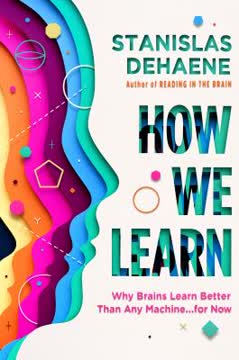つの重要なポイント
1. 複雑系は単純なルールから創発的な行動を示す
孤立した軍隊アリは、想像しうる中で最も行動が単純な動物の一つである。
単純さからの創発。 複雑系は、アリのコロニーから人間の脳に至るまで、基本的なルールに従う単純な構成要素の相互作用から高度な集団行動を示す。この創発的な複雑さは、個々の構成要素を孤立して研究するだけでは予測も理解もできない。
創発の例:
- アリのコロニーが示す集団知能
- 脳のニューロンが生み出す意識
- 自己組織化する経済市場
- 新たな脅威に適応する免疫システム
複雑系の研究は、これらの創発現象がどのように生じるかを理解し、さまざまな分野に共通する原則を特定することを目指している。この学際的なアプローチは、従来の還元主義的方法に挑戦し、生物学、物理学、社会科学、技術の複雑な問題に取り組む新しい方法を提供する。
2. 情報理論は熱力学と計算を橋渡しする
シラードは、エントロピーと情報の間にリンクを初めて作り出し、これが後に情報理論の基礎となり、複雑系の重要なアイデアとなった。
物理的概念としての情報。 クロード・シャノンの情報理論は、情報を定量化し分析するための数学的枠組みを提供し、熱力学、計算、生物学などの一見異なる分野間の深い関係を明らかにした。
情報理論の主要な概念:
- 情報内容の尺度としてのエントロピー
- 通信におけるチャネル容量とノイズ
- 圧縮と誤り訂正
これらのアイデアは、物理システム、計算、さらには生命そのものの理解に深い影響を与える。例えば、DNAを情報を運ぶ分子として見ることは、遺伝学と進化のアプローチを革命的に変えた。情報理論はまた、データ圧縮、誤り訂正コード、暗号技術などの現代技術の基盤でもある。
3. カオス理論は決定論的な予測不可能性を明らかにする
見かけ上ランダムな行動は、外部のランダム性の源がなくても決定論的システムから生じることがある。
カオスの中の秩序。 カオス理論は、単純な決定論的システムが初期条件に非常に敏感で、複雑で見かけ上ランダムな行動を生み出すことを示している。この発見は、古典的な予測可能性の概念に挑戦し、科学と哲学に広範な影響を与える。
カオスシステムの主要な特徴:
- 初期条件に対する感度(「バタフライ効果」)
- ストレンジアトラクターとフラクタル構造
- 周期倍加カスケードのような普遍的な性質
カオス理論は、気象予測と気候モデリング、生態学における人口動態、金融市場の分析、神経科学と心拍リズムの分析など、さまざまな分野で応用されている。カオスを理解することは、複雑系における予測と制御の限界を認識し、同時に基礎的なパターンと普遍性を明らかにするのに役立つ。
4. セル・オートマトンは単純な構成要素で複雑系をモデル化する
ルール110は、予測不可能な複雑な行動を生み出す非常に単純な決定論的システムの一例である。
単純さが複雑さを生む。 セル・オートマトン(CA)は、単純なルールに従って進化するセルのグリッドからなる数学的モデルである。その単純さにもかかわらず、CAは驚くほど複雑なパターンと行動を生み出し、自然システムにおける創発と計算を研究するための強力なツールとなっている。
セル・オートマトンの注目すべき例と応用:
- リッチな創発行動を示すコンウェイの「ライフゲーム」
- 複雑さによって分類されるウォルフラムの基本CAルール
- 結晶成長や流体力学のような物理現象のモデリング
- 生物のパターン形成などの生物学的プロセスのシミュレーション
CAは、単純さと複雑さの関係についての直感に挑戦し、多くの自然現象が単純な基礎ルールから生じる可能性を示唆している。また、離散モデルと連続モデルの橋渡しを提供し、計算と現実の根本的な性質に新しい視点を提供する。
5. 遺伝的アルゴリズムは進化を模倣して問題を解決する
それが遺伝的アルゴリズムの起源である。プログラムを良い馬や良いトウモロコシを育てるように育てることができるかどうかを考え始めた。
計算としての進化。 遺伝的アルゴリズム(GA)は、生物学的進化の原理に触発された最適化技術である。GAは、進化プロセスが複雑な問題を解決し、創造的な解決策を生み出す方法を示している。
遺伝的アルゴリズムの主要な構成要素:
- 候補解の集団
- 解を評価するための適応度関数
- 選択、交叉、突然変異のオペレーター
GAは、工学設計の最適化、金融モデリングと取引戦略、薬物発見と分子設計、芸術と音楽の作曲など、さまざまな問題に成功裏に応用されている。実用的な応用にとどまらず、GAは自然界における進化プロセスの力と限界についての洞察を提供する。GAは、小さなランダムな変化の蓄積と選択圧によって複雑な適応がどのように生じるかを示している。
6. ネットワーク科学は多様なシステムにおける普遍的なパターンを明らかにする
ネットワーク思考は、人間の活動のすべての領域とほとんどの研究分野に侵入しようとしている。
接続が構造を明らかにする。 ネットワーク科学は、構成要素間の関係に焦点を当てて複雑系の構造と動態を研究する。このアプローチは、社会ネットワークから細胞代謝に至るまで、多様なシステムに驚くべき類似性を明らかにしている。
ネットワーク科学の主要な概念:
- スモールワールド特性と六次の隔たり
- スケールフリーネットワークとべき乗則の次数分布
- ネットワークの回復力と脆弱性
- コミュニティ構造とモジュラリティ
ネットワーク思考の応用:
- 疾病や情報の拡散の理解
- 金融市場と経済システムの分析
- 生態系の安定性と種間相互作用の研究
- インフラと交通ネットワークの最適化
ネットワーク科学は、複雑系を理解するための強力な枠組みを提供し、予測、制御、設計のための新しいツールをさまざまな分野に提供する。
7. 複雑系科学の未来は学際的な協力にある
複雑系科学は二つの異なる方向に分岐しようとしている。
複雑さの統一。 複雑系の研究は本質的に学際的であり、多様な分野からの洞察と方法を引き出している。分野が成熟するにつれ、広範な適用性を維持しながら統一された理論的枠組みを開発するという課題に直面している。
将来の発展のための主要な領域:
- 創発や自己組織化のような概念の洗練と形式化
- 複雑系を分析するための新しい数学的および計算的ツールの開発
- 異なる記述スケール間のギャップを埋める(例:遺伝子から生物、エコシステムまで)
- 気候変動や社会的不平等などの現実の問題に複雑系の原則を適用する
複雑系科学の未来は、おそらく以下を含むだろう:
- 理論家と実験家の間の協力の増加
- 物理学、生物学、コンピュータ科学、社会科学からのアイデアの統合
- 複雑系に焦点を当てた新しい教育プログラムと研究機関の開発
- 人工知能、合成生物学、持続可能なデザインなどの分野での新しい応用
私たちの世界がますます相互接続され複雑になるにつれ、複雑系科学の洞察と方法は、私たちが直面する課題を理解し、乗り越えるためにますます重要になるだろう。
最終更新日:
FAQ
What's Complexity: A Guided Tour about?
- Exploration of Complexity Science: The book provides an overview of complexity science, focusing on how complex behaviors emerge from simple rules and interactions.
- Historical Context: It traces the development of complexity science from reductionism to new fields like chaos theory and network theory.
- Interdisciplinary Approach: Melanie Mitchell integrates concepts from biology, computer science, physics, and economics to explain complex systems.
Why should I read Complexity: A Guided Tour?
- Accessible to All: The book is written for both scientists and nonscientists, requiring no advanced background in math or science.
- Engaging Writing Style: Mitchell's engaging and informative writing makes complex ideas relatable and easier to grasp.
- Insight into Current Research: Readers gain insights into cutting-edge research and challenges in understanding complex systems.
What are the key takeaways of Complexity: A Guided Tour?
- Definition of Complexity: Complexity involves systems with large networks of components that exhibit complex behavior without central control.
- Emergence and Self-Organization: The book highlights how complex patterns arise from simple interactions without a central leader.
- Interconnectedness of Systems: Different complex systems, like ant colonies and economies, share common properties and behaviors.
How does Melanie Mitchell define complexity in Complexity: A Guided Tour?
- Complex System Definition: A complex system is one where large networks of components with no central control give rise to complex behavior.
- Key Characteristics: These systems exhibit complex collective behavior, signaling, information processing, and adaptation.
- Examples of Complex Systems: Examples include ant colonies, immune systems, and economies, all showing complex behaviors from simple rules.
What is reductionism, and how does it relate to complexity in Complexity: A Guided Tour?
- Basic Definition: Reductionism is the belief that understanding a whole system can be achieved by understanding its parts.
- Limitations of Reductionism: The book argues that reductionism often fails to account for interactions between parts in complex phenomena.
- Shift to Complexity Science: Mitchell discusses the shift from reductionist approaches to complexity science, focusing on emergent behaviors.
What is the significance of self-organization in complex systems according to Complexity: A Guided Tour?
- Definition of Self-Organization: Self-organization is the process where simple parts form complex structures without central control.
- Examples in Nature: Examples include animal behavior patterns, cell organization, and social network dynamics.
- Implications for Understanding Complexity: Understanding self-organization helps researchers grasp how order emerges from chaos.
How does Complexity: A Guided Tour address the concept of evolution?
- Darwinian Evolution: The book discusses how complex organisms evolve from simpler ancestors through natural selection.
- Genetic Algorithms: It explores evolutionary principles in computer science, using genetic algorithms to solve complex problems.
- Interplay of Randomness and Selection: The role of randomness in genetic variation and natural selection is highlighted.
What are genetic algorithms, and how are they used in Complexity: A Guided Tour?
- Definition of Genetic Algorithms: These are computational methods using natural selection principles to evolve solutions to problems.
- Application in Robotics: The book describes using genetic algorithms to evolve strategies for a robot named Robby.
- Real-World Applications: Genetic algorithms are used in fields like engineering, finance, and art to solve complex problems.
What is the Copycat program mentioned in Complexity: A Guided Tour?
- Analogy-Making Program: Copycat mimics human-like analogy-making in a letter-string microworld.
- Components of Copycat: It includes the Slipnet, Workspace, and codelets, which work together to solve analogy problems.
- Significance of Copycat: It models human cognition and creativity, showing how complex systems emerge from simple rules.
What is Kleiber's law, and why is it important in Complexity: A Guided Tour?
- Scaling of Metabolic Rate: Kleiber's law states that an organism's metabolic rate scales with its body mass to the three-fourths power.
- Implications for Biology: It challenges traditional views on metabolic rate scaling and suggests larger animals are more efficient.
- Connection to Metabolic Scaling Theory: The law is a key component of metabolic scaling theory, integrating genetics, ecology, and network science.
What are small-world networks, and how are they relevant in Complexity: A Guided Tour?
- Definition of Small-World Networks: These networks have short average path lengths and high clustering, common in social and biological systems.
- Examples in Real Life: Examples include social networks and the Internet, illustrating efficient communication and information flow.
- Significance for Complex Systems: Understanding these networks helps analyze complex system dynamics and information spread.
What are the best quotes from Complexity: A Guided Tour and what do they mean?
- “The whole is more than the sum of its parts.”: Emphasizes that complex systems can't be fully understood by analyzing individual components alone.
- “The great unexplored frontier is complexity.”: Highlights the importance of studying complex systems as largely uncharted scientific territory.
- “Nature proceeds little by little from things lifeless to animal life.”: Reflects the gradual evolution of complexity in nature through evolutionary processes.
レビュー
本書『Complexity: A Guided Tour』は、複雑系の入門書として高く評価されている。読者は、ミッチェルの難解な概念を明快に説明する能力と、情報理論、進化、ネットワーク科学など幅広いトピックをカバーしている点を評価している。一部の読者は、各トピック間の深さや一貫性の欠如を批判しているが、文章の魅力的なスタイルや、一見無関係な分野を結びつける能力は称賛されている。しかし、数人の読者は内容が時代遅れであるか、過度に単純化されていると感じた。全体として、特にコンピュータサイエンスの背景を持つ人々にとって、複雑系科学に興味があるならばお勧めの一冊である。
Similar Books















